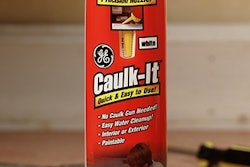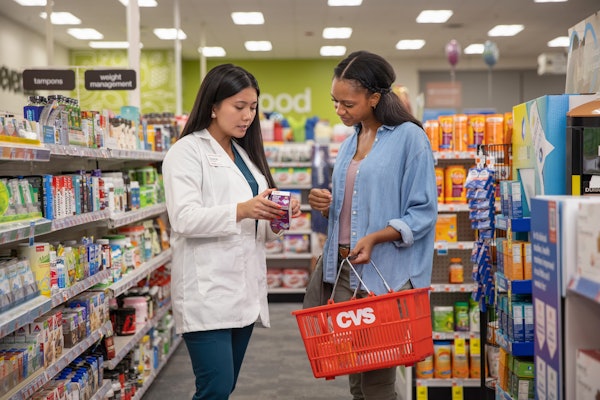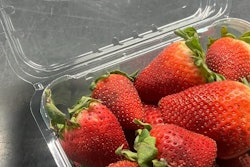Packaging changes will pound many food marketing companies come September 2004 if the federal requirement for country-of-origin labels (COOLs) goes into effect as planned. Ray Walker, chief executive officer of Patterson Frozen Foods, Patterson, CA, says, “Packaging, without question, will have to be redesigned.”
Patterson is a private label packager of frozen vegetables and fruits for the likes of Safeway, Kroger, and Publix supermarkets. Fresh and frozen fruit are already required to label the country of origin under the 1930 Tariff Act. But the 2002 Farm Bill, which includes the COOL requirement on red meat, produce, fish and peanuts, vastly complicates the 1930 requirements. And because the produce sources for a given product can frequently change in the course of a year, the requirement opens the door to numerous possible COOL statements on any one SKU.
Walker says his company won’t be able to simply stick a COOL label on a bag of frozen peas or fruit medley. Labels don’t adhere well to the bags of frozen produce that are stored at temperatures below 5?F during the storage and distribution process. Given the complexities of the COOL requirement—one mixed fruit that Patterson packs could use up to 216 different copy combinations for its label—the law is, in Walker’s view, “unworkable.” He can’t imagine asking Patterson’s customers to design separate bags for each potential variety and source of frozen produce.
Listening to processors
The U.S. House of Representatives agrees, though not with objections raised by produce marketers. It passed an amendment by a vote of 347-64 to the U.S. Department of Agriculture’s fiscal 2004 appropriations bill canceling COOL, but only for red meat. Meat processors, distributors, and retailers have been the loudest in the opposition to COOL. The Senate, on the other hand, wants COOL to go into effect as scheduled.
Under the statute, country-of-origin labeling for beef, fish, produce, and peanuts may be accomplished by labeling the package or the individual item, or by displaying signs at the retail point of sale. The labels have to declare the country (including the U.S.) where the ingredients were grown or raised. In some instances, additional details, such as where the ingredients were processed, must also be declared. USDA published guidelines last year for use in a voluntary two-year COOL program that preceded the full rollout in September 2004.
Meanwhile, as Congress decides what it wants to do, grocers are pressing food companies to begin thinking about label design and cost. For example, Wal-Mart Stores, Inc., Bentonville, AR, has asked for mock-ups of COOL label designs by September 30, 2003.
Tripling of SKUs
Gene Leman, head of the fresh meat group for Tyson Foods, Inc., Springdale, AR, says his company currently sells 8ꯠ different products that could conceivably fall under COOL. But because of COOL, “We believe our product count could go up from 8ꯠ to 20ꯠ to maybe even 40ꯠ product items. In turn, that will cause companies like us to put in more computer systems, tracking systems, and material handling systems that cost millions of dollars with truly zero return on investment.”
Gary Mickelson, a Tyson spokesman, declines to give any estimates on what the entire COOL program would cost the company in terms of new labeling costs. “We wouldn’t want to make that estimate publicly,” he explains. Nor did he want to comment on whether COOL requirements would encourage Tyson to make packaging changes as well.
Congress, of course, wasn’t thinking about added costs for U.S. food processors when it passed the COOL mandate in 2002. Rather, House and Senate members were hoping to both protect the U.S. food supply from sub-par foreign food and start an indirect kind of “Buy American” food program that would lift the economic fortunes of American ranchers and growers.
Exemptions change focus
But the 2002 law had a couple of exemptions that seemed to both undercut congressional intentions and the professed benefits of the law. These exemptions allowed the issue of costs to come to the fore.
For example, foodservice institutions and restaurants are exempt, even though they account for between 50 to 80% of the foreign beef consumed in the U.S., according to various estimates. In addition, ingredients in processed foods don’t require labels. The USDA guidelines published in the fall of 2002 say processed foods such as ready-to-cook Beef Wellington, ground beef in a meal mix, fish in sushi, apple slices in a pie, or peanuts in a candy bar are exempt.
The voluntary program also lays out guidelines for labeling beef as foreign- and U.S.-origin. Many ranchers support this. But the added cost from mandatory labeling may not please grocery store customers, who have heretofore shown little interest in the difference between home-grown and foreign beef.
Keith Collins, chief economist at the USDA, says that not one U.S. beef producer has participated in the voluntary U.S.-origin meat labeling program that the USDA’s Food Safety and Inspection Service and Agricultural Marketing Service made available a few years ago.
“Assuming that there are at least some U.S. processors that could implement a process verification program at reasonable cost, this lack of participation suggests that retailers and their suppliers believe consumer preference for domestic product is not strong, when compared with imported product,” he says.
“We’ve only had two requests from customers over the years to label a product with the country of origin,” explains Mark Klein, a spokesman for Wichita, KS-based Excel Beef. “And those requests had to do with Australia.”


























